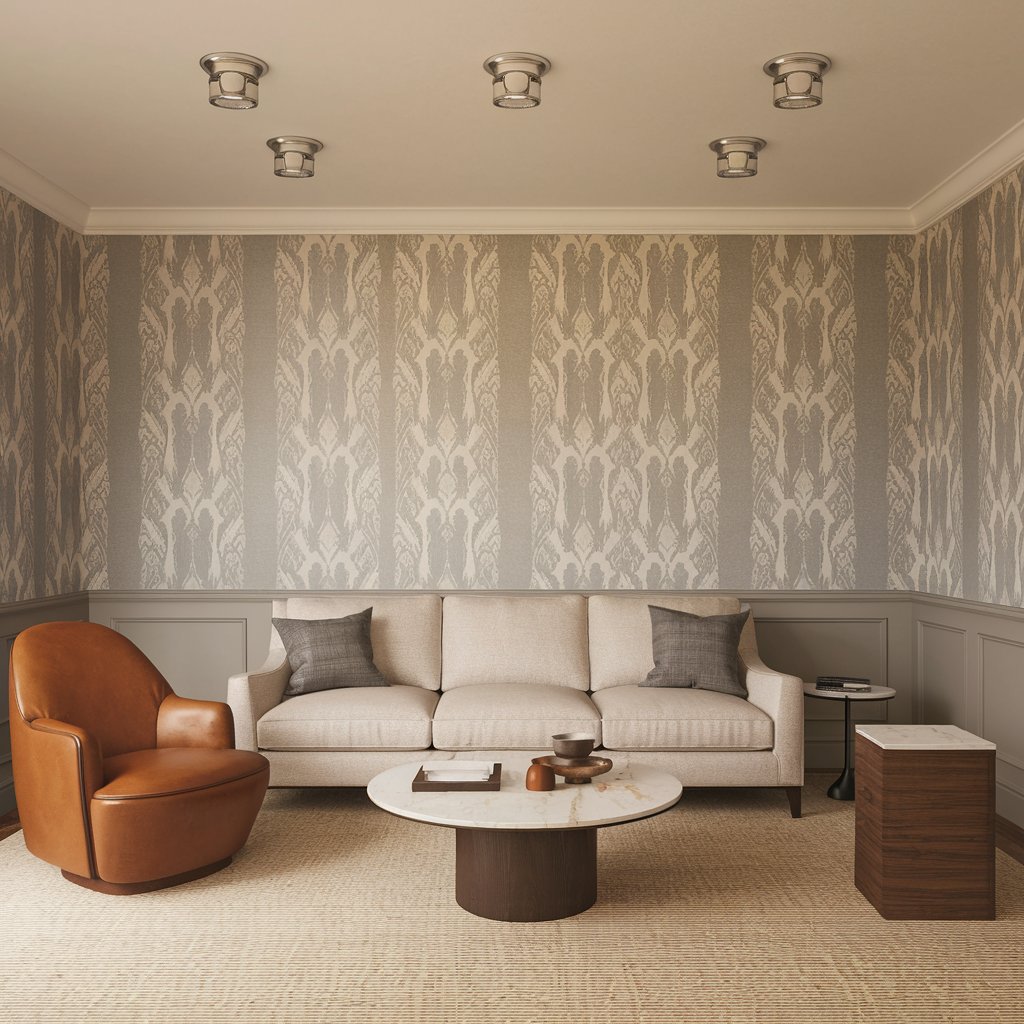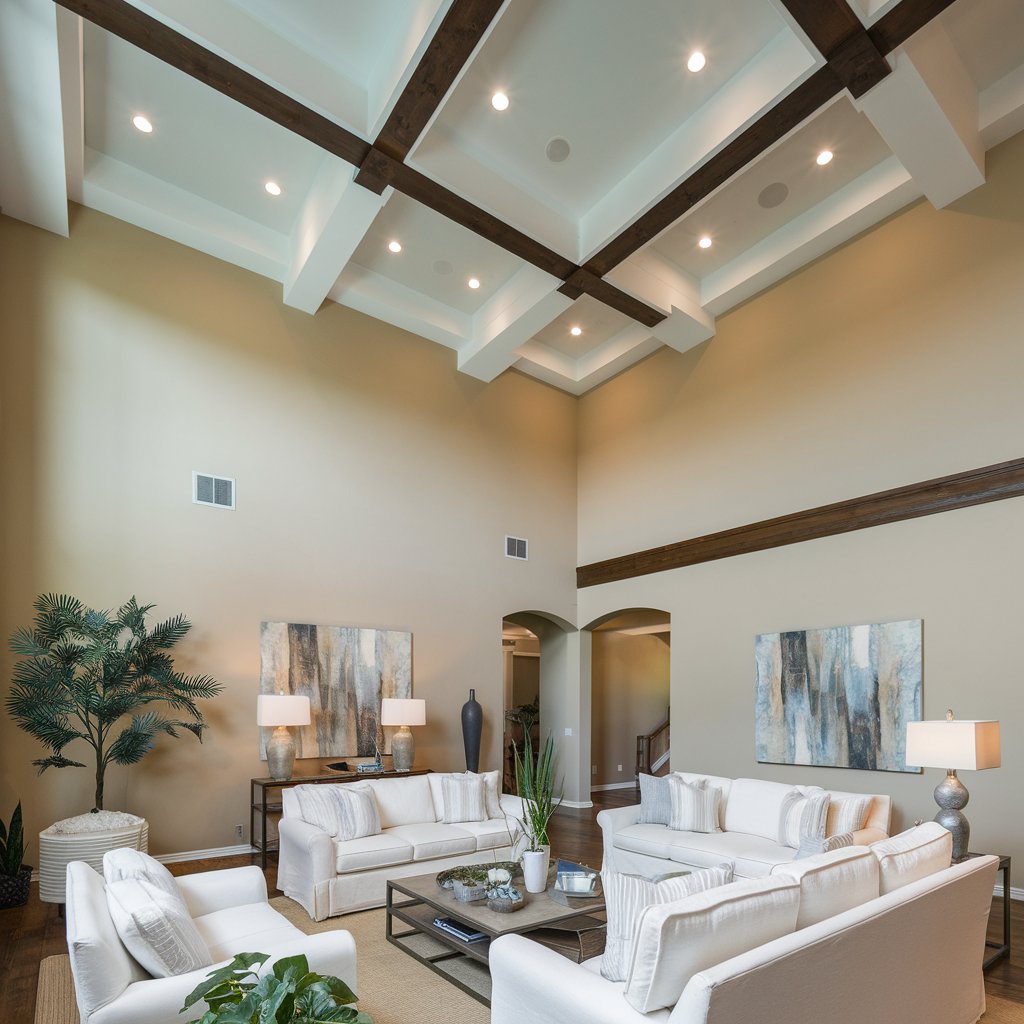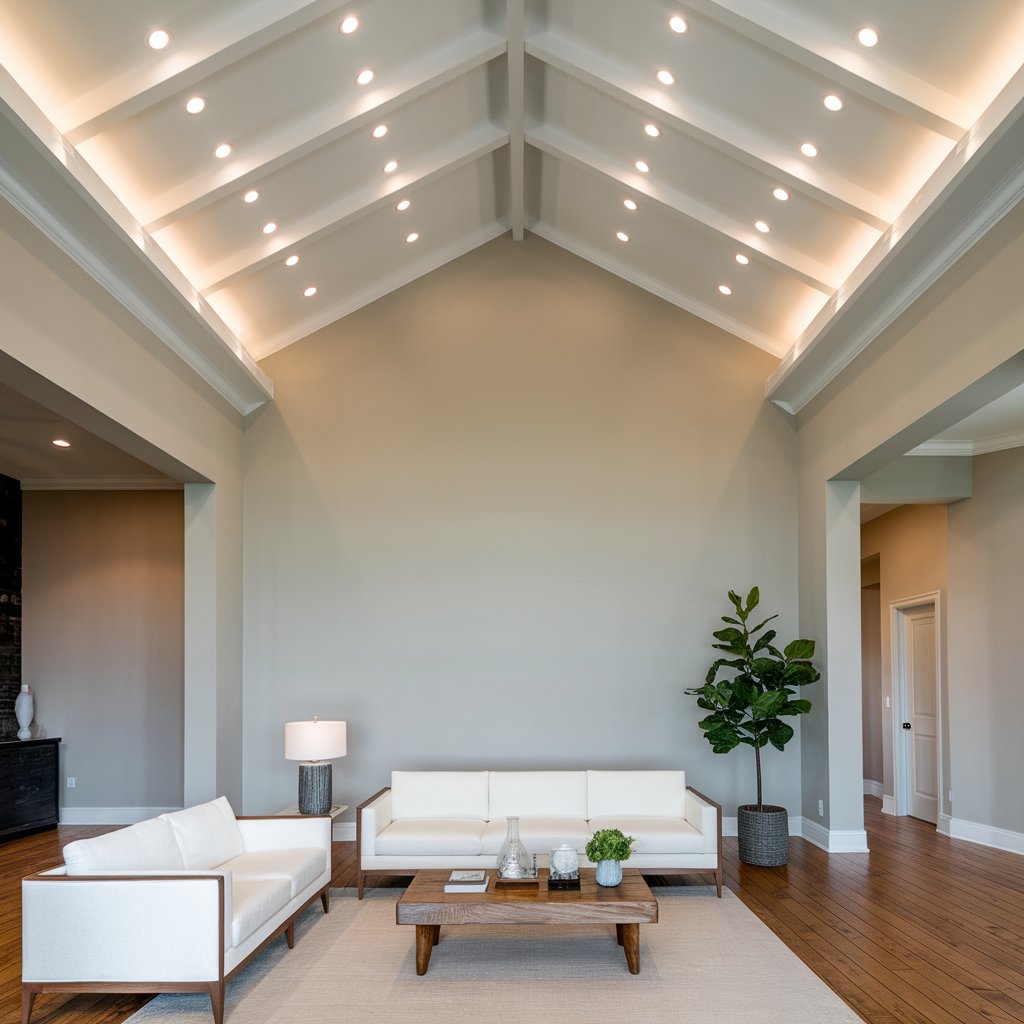How Many Can Lights for a 12×12 Room? Right Numbers For You
Are you undertaking a renovation project or simply looking to improve the lighting in your 12×12 room? Choosing the right number of recessed lights, often called “can lights,” can significantly impact the ambiance and functionality of the space. How many can lights for a 12×12 room? This comprehensive guide will walk you through the factors…
Are you undertaking a renovation project or simply looking to improve the lighting in your 12×12 room? Choosing the right number of recessed lights, often called “can lights,” can significantly impact the ambiance and functionality of the space. How many can lights for a 12×12 room? This comprehensive guide will walk you through the factors to consider, helping you determine the ideal number for your needs, from understanding lighting calculations to exploring different fixture types and placement strategies. We’ll also cover common questions and potential pitfalls to avoid. Get ready to illuminate your space perfectly!
Before diving into the specifics of a 12×12 room, let’s establish the fundamental principles of residential lighting. Proper illumination involves considering several factors: the room’s size, its purpose, the desired ambiance, and the types of light
fixtures used. The goal is to achieve even, glare-free illumination without harsh shadows.
How Many Can Lights for a 12×12 Room?
For a 12×12 room, you typically need four to six can lights. A good rule is one 4″ or 6″ can light per 4 to 6 square feet. Space them evenly, about 4 to 6 feet apart, and avoid placing them too close to walls.
Calculating the Required Lumens for a 12×12 Room
| Room Type | Recommended Lumens per sq ft | Total Lumens Needed (144 sq ft) |
|---|---|---|
| Bedroom | 10–20 | 1,440 – 2,880 |
| Living Room | 10–20 | 1,440 – 2,880 |
| Kitchen | 30–40 | 4,320 – 5,760 |
| Bathroom | 70–80 | 10,080 – 11,520 |
| Office/Workspace | 50–75 | 7,200 – 10,800 |
The amount of light needed is measured in lumens. A general rule of thumb is to aim for 1.5 lumens per square foot for general ambient lighting. For a 12×12 room (144 square feet), this translates to approximately 216 lumens. However, this is a starting point. Darker rooms or rooms requiring more task lighting will require more lumens.
Read More: Lighting Your Space: How Many Lumens Do You Need to Light a Room?
Types of Recessed Lighting Fixtures

Different Wattages and Lumens
Can lights come in various wattages, each producing a different number of lumens. LEDs are the most energy-efficient option, offering high lumen output with lower energy consumption. It’s crucial to check the lumen output of your chosen fixture.
Beam Angles: Narrow, Medium, and Wide
The beam angle affects the spread of light. Narrow beam angles (15-25 degrees) are suitable for accent lighting, while medium (30-45 degrees) and wide (60-90 degrees) angles provide broader illumination. Consider a combination for balanced lighting.
Color Temperature
Color temperature is measured in Kelvin (K). Lower Kelvin values (2700K-3000K) produce a warmer, more yellowish light, ideal for relaxation. Higher values (5000K-6500K) produce a cooler, bluish light, often preferred for task lighting.
Read More: How Many Pot Lights in a Living Room: Determining The Perfect Number
Factors Affecting Can Light Placement in a 12×12 Room

The arrangement of your can lights will significantly impact the overall lighting quality. Consider the following factors:
-
- Room’s Purpose: A bedroom requires a different lighting scheme than a kitchen.
- Ceiling Height: Higher ceilings may necessitate more lights to achieve even distribution.
- Furniture Placement: Avoid placing lights directly above furniture that might cast unwanted shadows.
Recommended Number of Can Lights for a 12×12 Room
Based on the 1.5 lumens per square foot guideline and assuming an average lumen output per can light, a safe estimate for a 12×12 room is 4-6 recessed lights. However, this is a general suggestion. More lights might be necessary depending on the factors discussed above.
Optimizing Can Light Placement for Even Illumination
To avoid dark spots, distribute your can lights evenly throughout the room. A common strategy is to create a grid pattern. For a 12×12 room, consider placing lights along the perimeter and possibly one or two in the center, depending on ceiling height and desired brightness.
Using a Lighting Calculator for Precise Planning
Online lighting calculators can help determine the ideal number of lights and their placement for your specific room. These tools take into account the room’s dimensions, ceiling height, fixture lumen output, and other relevant factors.
Read More: Transform Your Space: How to Improve Lighting in a Room?
Different Lighting Layouts for a 12×12 Room

Grid Pattern
A grid pattern ensures even coverage, ideal for general ambient lighting.
Layered Lighting Approach
Combine ambient lighting (can lights) with task lighting (desk lamps) and accent lighting (track lights) for versatile illumination.
Zoned Lighting
Divide the room into zones (e.g., reading nook, work area) and install lights accordingly.
Considering Dimmable Can Lights
Dimmable can lights offer greater control over the lighting intensity, allowing you to adjust the ambiance to suit different moods and activities. This added flexibility is a significant advantage.
The Role of Ambient, Task, and Accent Lighting
Effective room lighting often involves a layered approach incorporating three types of lighting: ambient (general illumination), task (focused light for specific activities), and accent (highlighting features).
Potential Challenges and Troubleshooting
Installing recessed lighting requires careful planning and execution. Incorrect installation can lead to uneven illumination, flickering, or even safety hazards.
Comparing Different Brands and Models of Can Lights
Several brands offer high-quality recessed lights, each with its features and price points. Research and compare options before making a purchase.
Budget Considerations for Can Light Installation
The cost of can light installation varies depending on factors such as the number of lights, the complexity of the installation, and labor costs. Get multiple quotes to ensure you’re getting a fair price.
Safety Precautions During Can Light Installation
Always turn off the power before working with electrical wiring. If you lack experience with electrical work, hire a qualified electrician to ensure a safe and correct installation.
Maintaining and Replacing Can Lights
Regular maintenance can extend the lifespan of your can lights. Clean the fixtures periodically and replace bulbs as needed.
Integrating Smart Home Technology with Can Lights
Smart can lights offer advanced control features, such as remote operation, scheduling, and integration with other smart home devices.
Frequently Asked Questions
What is the average cost of installing can lights in a 12×12 room?
The cost varies widely depending on location, the number of lights, and labor costs. Expect to pay anywhere from a few hundred to over a thousand dollars.
Can I install can lights myself?
While possible for DIY enthusiasts with electrical experience, improper installation can be dangerous. If you’re unsure, hiring a professional is recommended.
How often should I replace the bulbs in my can lights?
LED bulbs have a much longer lifespan than incandescent bulbs. Consult the manufacturer’s specifications for the expected lifespan of your specific bulbs.
What are the different types of finishes available for can lights?
Can lights are available in various finishes, including brushed nickel, polished chrome, oil-rubbed bronze, and white.
How do I choose the right color temperature for my can lights?
Consider the room’s purpose. Warmer colors (2700K-3000K) are ideal for bedrooms and living rooms, while cooler colors (5000K-6500K) are better suited for kitchens and bathrooms.
Final Thoughts
Determining the ideal number of can lights for your 12×12 room requires careful consideration of various factors, including room size, purpose, desired ambiance, and personal preferences. While a general guideline of 4-6 lights is a good starting point, using a lighting calculator and understanding the nuances of lumen output, beam angles, and color temperatures will help you achieve optimal illumination. Remember to prioritize safety during installation and consider the benefits of dimmable lights and smart home integration for enhanced control and convenience. By following the steps outlined in this guide, you’ll be well-equipped to transform your 12×12 room into a beautifully and effectively lit space.

